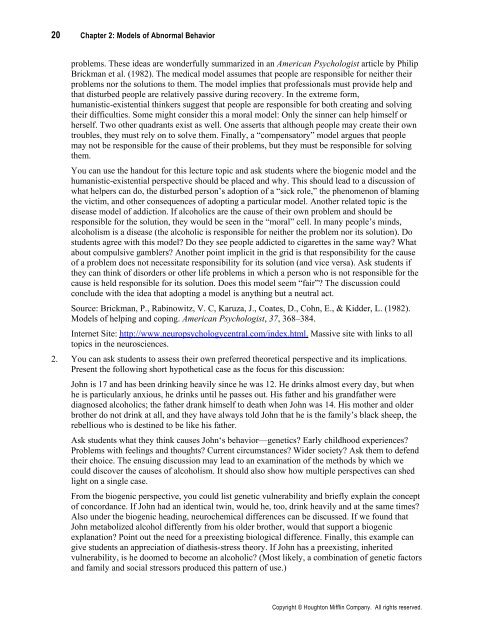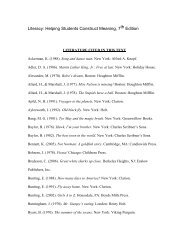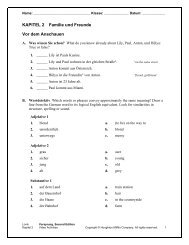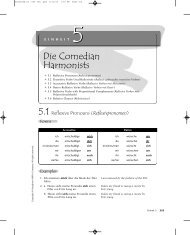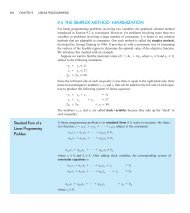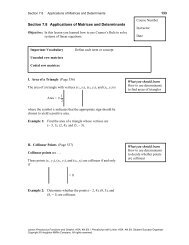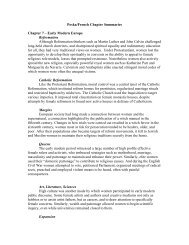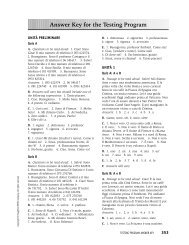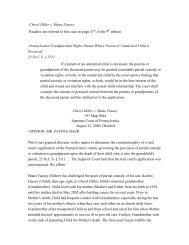Understanding Abnormal Behavior - Cengage Learning
Understanding Abnormal Behavior - Cengage Learning
Understanding Abnormal Behavior - Cengage Learning
Create successful ePaper yourself
Turn your PDF publications into a flip-book with our unique Google optimized e-Paper software.
20 Chapter 2: Models of <strong>Abnormal</strong> <strong>Behavior</strong><br />
problems. These ideas are wonderfully summarized in an American Psychologist article by Philip<br />
Brickman et al. (1982). The medical model assumes that people are responsible for neither their<br />
problems nor the solutions to them. The model implies that professionals must provide help and<br />
that disturbed people are relatively passive during recovery. In the extreme form,<br />
humanistic-existential thinkers suggest that people are responsible for both creating and solving<br />
their difficulties. Some might consider this a moral model: Only the sinner can help himself or<br />
herself. Two other quadrants exist as well. One asserts that although people may create their own<br />
troubles, they must rely on to solve them. Finally, a “compensatory” model argues that people<br />
may not be responsible for the cause of their problems, but they must be responsible for solving<br />
them.<br />
You can use the handout for this lecture topic and ask students where the biogenic model and the<br />
humanistic-existential perspective should be placed and why. This should lead to a discussion of<br />
what helpers can do, the disturbed person’s adoption of a “sick role,” the phenomenon of blaming<br />
the victim, and other consequences of adopting a particular model. Another related topic is the<br />
disease model of addiction. If alcoholics are the cause of their own problem and should be<br />
responsible for the solution, they would be seen in the “moral” cell. In many people’s minds,<br />
alcoholism is a disease (the alcoholic is responsible for neither the problem nor its solution). Do<br />
students agree with this model? Do they see people addicted to cigarettes in the same way? What<br />
about compulsive gamblers? Another point implicit in the grid is that responsibility for the cause<br />
of a problem does not necessitate responsibility for its solution (and vice versa). Ask students if<br />
they can think of disorders or other life problems in which a person who is not responsible for the<br />
cause is held responsible for its solution. Does this model seem “fair”? The discussion could<br />
conclude with the idea that adopting a model is anything but a neutral act.<br />
Source: Brickman, P., Rabinowitz, V. C, Karuza, J., Coates, D., Cohn, E., & Kidder, L. (1982).<br />
Models of helping and coping. American Psychologist, 37, 368–384.<br />
Internet Site: http://www.neuropsychologycentral.com/index.html. Massive site with links to all<br />
topics in the neurosciences.<br />
2. You can ask students to assess their own preferred theoretical perspective and its implications.<br />
Present the following short hypothetical case as the focus for this discussion:<br />
John is 17 and has been drinking heavily since he was 12. He drinks almost every day, but when<br />
he is particularly anxious, he drinks until he passes out. His father and his grandfather were<br />
diagnosed alcoholics; the father drank himself to death when John was 14. His mother and older<br />
brother do not drink at all, and they have always told John that he is the family’s black sheep, the<br />
rebellious who is destined to be like his father.<br />
Ask students what they think causes John‘s behavior—genetics? Early childhood experiences?<br />
Problems with feelings and thoughts? Current circumstances? Wider society? Ask them to defend<br />
their choice. The ensuing discussion may lead to an examination of the methods by which we<br />
could discover the causes of alcoholism. It should also show how multiple perspectives can shed<br />
light on a single case.<br />
From the biogenic perspective, you could list genetic vulnerability and briefly explain the concept<br />
of concordance. If John had an identical twin, would he, too, drink heavily and at the same times?<br />
Also under the biogenic heading, neurochemical differences can be discussed. If we found that<br />
John metabolized alcohol differently from his older brother, would that support a biogenic<br />
explanation? Point out the need for a preexisting biological difference. Finally, this example can<br />
give students an appreciation of diathesis-stress theory. If John has a preexisting, inherited<br />
vulnerability, is he doomed to become an alcoholic? (Most likely, a combination of genetic factors<br />
and family and social stressors produced this pattern of use.)<br />
Copyright © Houghton Mifflin Company. All rights reserved.


